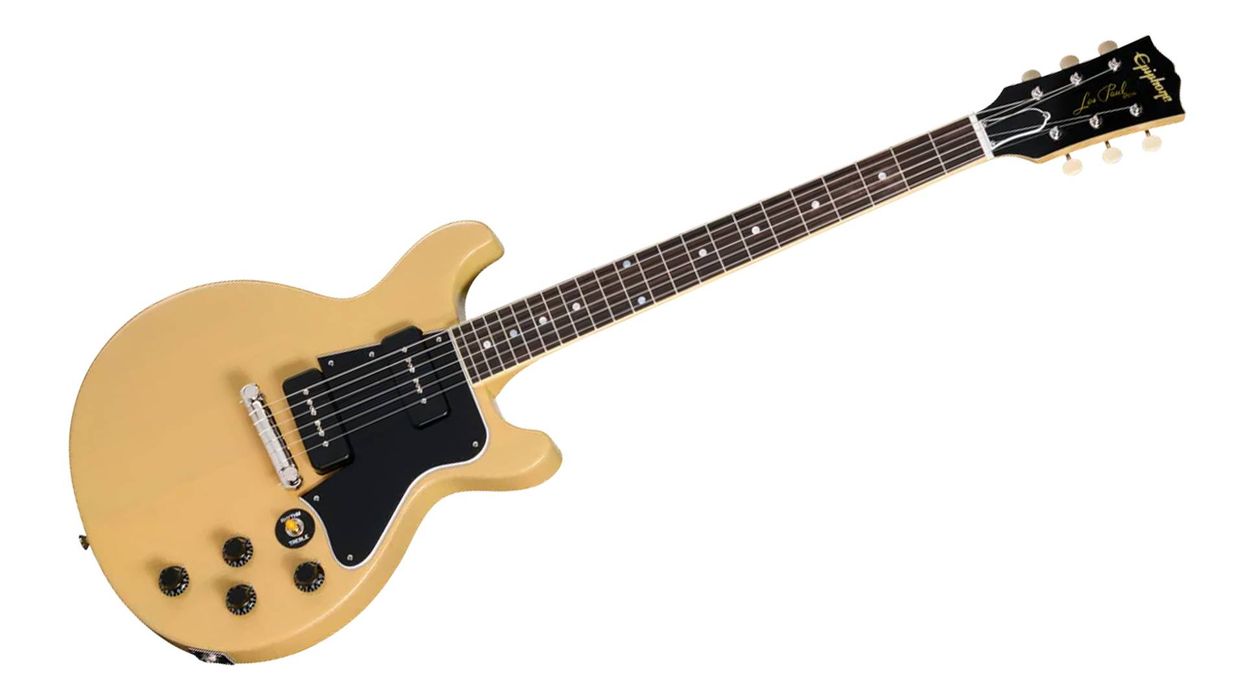The popularity of all-in-one multi-effects units is at an all-time high largely because of convenience, but also because, these days, that convenience often comes with quality sounds to match. The Boss GX-100 is the latest iteration of a throw-and-go solution that aims to deliver both. It comes packed with amps, effects, routing options, impulse responses, and much more. It has tough competition in this price range, like the Line 6’s POD Go and the Headrush MX5. But it excels on many fronts, not least in terms of quality.
Big Boss Brains
The GX-100 feels very solid, which is a huge plus for units in this price range. It features an array of control buttons along the front, a quartet of knobs under the touchscreen interface, and a handful of buttons that lead you to deeper editing. The brain of the unit is based on a collection of 23 AIRD (Augmented Impulse Response Dynamics) amp models and over 150 effects. That’s an impressive number of options. And each one of those effects has a pile of parameters to tweak.
I’m no stranger to digital guitar units, so typically I dive in and get my hands dirty. However, I found that interface on the GX-100 requires some research before you can approach it with confidence. The factory presets are easy enough to access and scroll through, but when starting a patch from scratch I had to dig into the manual for guidance. Once the basics are mastered, the signal flow on the screen is very clear, with a collection of hexagonal symbols that represent elements of your signal chain. Changing parameters on the fly is easy and access to the slightly deeper functions involves a pretty shallow learning curve.
Amped To Overflowing
Of course, there are far too many options and possible signal chain permutations to give an exhaustive look at what the GX-100 can do here. But the collection of AIRD amps covers the basic food groups, with emulations of various Marshall, Vox, Fender, Mesa/Boogie, and Bogner varieties along with Roland’s classic models. Generally, these models sound familiar and authentic, though they may be peppered with digital artifacts in some situations. For example, I started with a meat-and-potatoes rig made up of a Fender-style amp, a few distortion pedals, delays, and a reverb. The classic mid-scooped tone profile that defines a Fender was certainly there, but I did hear some digital fingerprints in the high end. You probably wouldn’t hear this in a gig or in a band mix, but it did pop up on both headphones and studio monitors.
Effects, needless to say, are abundant and often great sounding. Boss’ history of outstanding delays and reverb, for example, pays off in the form of exceptional delay and reverb sounds here. With such a plethora of effect choices, option paralysis could be a real concern. But I tended to either start simple and expand from there or find a preset that was close to what I was looking for and trim down any unnecessary patches. The GX-100’s interface encourages this kind of smooth workflow. The GX-100’s interface also rewards experimentation—I had fun combining RAT-style dirt with an acoustic guitar sim, a wacky harmonizer, and some ambient delay and reverb. The GX-100 is full of surprises like this.
The GX-100’s interface encourages smooth workflow.
Dirt in the Box
Nailing overdrive sounds without tubes is hard, and usually a pretty expensive proposition. So, I wasn’t totally surprised when the low-to-medium gain models I tried felt a touch stiff and lacking harmonic and overtone nuance. By contrast, though, most of the high-gain emulations felt warm and punchy—especially the Mesa and Bogner varieties. It’s also always interesting to compare various distortion or overdrive boxes modeled in the unit with the quality of amp-based distortion. With the more rock-centric amp emulations such as Marshall, Mesa/Boogie, and Bogner I tended to favor saving the block allowance and using the amp itself to push the overdrive, which speaks to the quality of the amp models here.
The Verdict
As a relatively affordable, digital, all-in-one unit, the GX-100 is about as full featured as it gets, with a few noticeable exceptions being XLR outputs and a built-in tap tempo—which are likely not dealbreakers for most. At $619 it shines above others in this price range in terms of build quality and the level of I/O options. There’s probably room for improvement in the distortion and overdrive emulations, but there are thousands of other tones that warrant a long look and will compel you to play and create.















